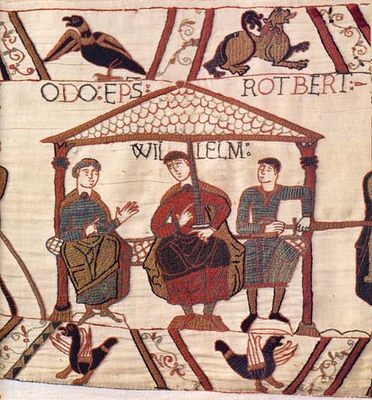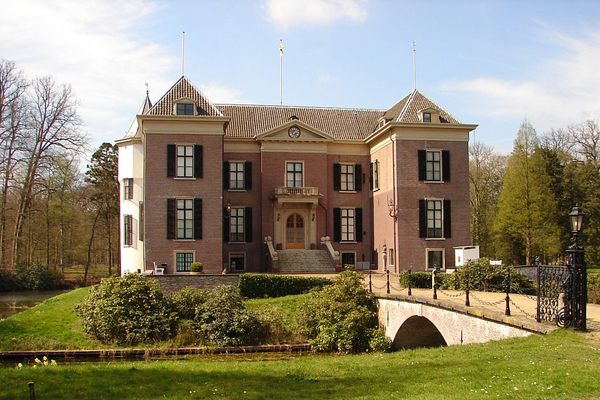About
The first fortress to stand on this site in the Norman city of Falaise was built in the 10th century by a Viking chieftain whose descendants went on to become the Francisized Normans. According to a popular legend, it was a century later, in the year 1027, that a young girl named Herleva had a terrifying and prophetic nightmare from which she would awake screaming.
Herleva had weeks before been seduced by Robert the Duke of Normandy and was pregnant with her first child. In her feverish dream, a gigantic tree burst from her stomach. Its gnarled roots sprouted from her corpse and spread across Normandy like the tentacles of one of the Kraken monsters of Norse myth. The tree's trunk towered into the sky as its colossal branches reached across the channel, casting an ominous shadow over England like the claws of a ravenous beast preparing to pounce on the country.
Several months later Herleva would give birth to a son that she named William. The child would be called "William the bastard" for much of his youth, due to both the circumstances of his birth and his temperament. But despite these humble and stigmatized origins, William would one day conquer the Anglo Saxons and become the King of England. He founded a dynasty that lasted many centuries and transformed the political, economic, military, social, and linguistic history of Western Europe.
In the wake of the conquest of England, the Normans never truly forgot their origins in this region of France. In 1123, the son of William, King Henry I of England, returned to Normandy and began work to rebuild the castle where his father had been born. The fortress was strengthened in its defensive capabilities and towers and keeps were added, resulting in the impressive edifice that can be seen today.
But the descendants of the conqueror were a fiercely argumentative and bloodthirsty bunch. For centuries the royal relatives fought each other savagely over disputes and power on both sides of the channel. The castle was the setting of fighting, torture, intrigue, and murder; it was in Falaise that King John of England had his nephew Arthur the Duke of Brittany imprisoned and murdered for the twin crimes of plotting to overthrow him and besieging the castle of John’s mother, Eleanor of Aquitaine.
Later in its history, the castle witnessed countless battles between the armies of France and England throughout the Hundred Years' War, with a seemingly endless cycle of violence occurring here. It was the backdrop for a great many sieges during this period and both armies occupied the castle at different times of the war. Evidence of this can be seen in much of the graffiti carved into the buildings by bored French or English soldiers.
After the medieval age, when castles and knights were replaced with more technologically advanced forms of warfare, the chateau lost its significance and was abandoned. It remained in a derelict state for several centuries until it received recognition as a historical monument in the 1800s and underwent restoration. Fierce bombing during the Second World War later destroyed or damaged much of the structure, but most of the castle remains intact, and is now a museum open to visitors.
Related Tags
Know Before You Go
The castle is easy to find as it is located in the middle of Falaise town. It is open from 10 a.m. to 6 p.m. from Monday to Sunday and the entrance fee is €8.50. Seeing the famous Bayeux Tapestry alongside a trip to the Château is a good combination, and easily done as Bayeux is only 40 minutes away from Falaise by car.
Community Contributors
Added By
Published
March 1, 2019











































